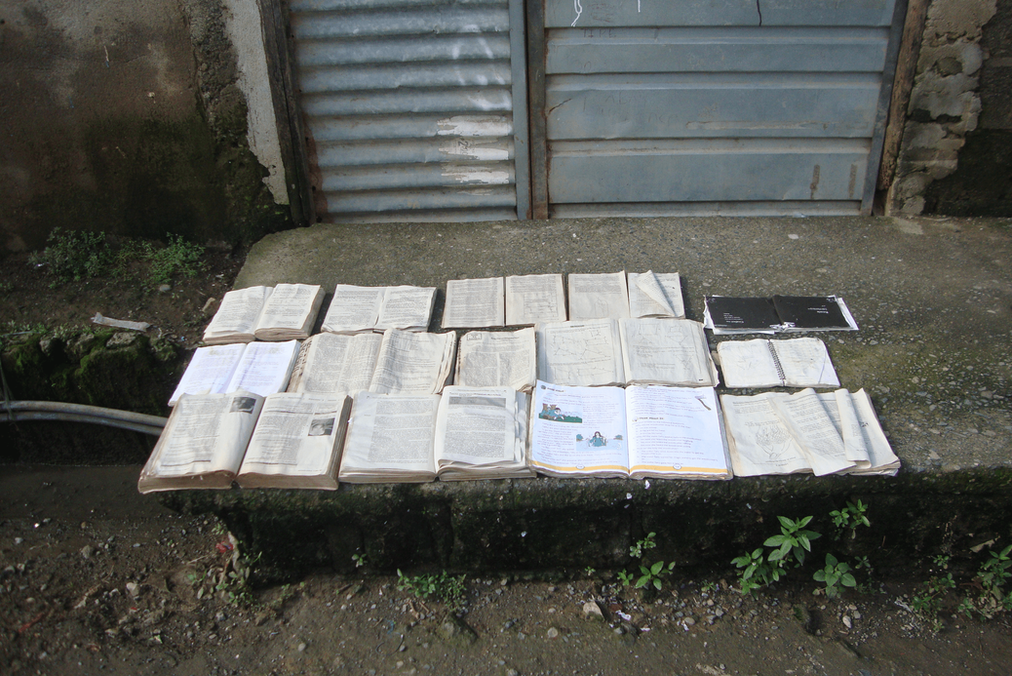© 2015

Installation photos by Nukie Timtiman
(preview)
(preview)
Things Washed Away (After the Floods of Typhoon Mario)
Mga gamit na inanod (Pagkatapos ng bahang idinulot ng bagyong Mario)

Things Left Out to Dry (After the Floods of Typhoon Mario)
Mga gamit na pinatuyo (Pagkatapos ng bahang idinulot ng bagyong Mario)
Things Thrown Away (After the Floods of Typhoon Mario)
Mga gamit na itinapon (Pagkatapos ng bahang idinulot ng bagyong Mario)
Barangay Tumana is an urban community situated along the banks of the Marikina River. Despite the dangers and ecological problems that the river poses, the residents of Tumana continue to reside and conduct leisurely and livelihood activities along the riverbanks and its waters. Meanwhile, other residential communities and small industries built near the Marikina River continually alter the natural state of the river.
This thesis project collects sensory imageries that are reflective of the relationship of an urban riverine community (Barangay Tumana) with its environment. Ethnographic methods will be incorporated in my art-making process in order to ensure a deeper understanding of the community, while methods of montage will be used in reconstructing the sensory data gathered in the context of an art exhibition. The field of ethnography can provide the visual arts alternative routes in examining and portraying landscapes and communities, and vice versa.
For my final output, I aim to raise questions on the implications of building human settlements near rivers: how people change its physical landscape and how the physical landscape, in turn, affects communities in it. The thesis also aims to open possibilities in employing ethnographic methods in the Studio Arts practice and surface how the two disciplines can intersect with one another.
Towards the end of the project, a public showing of the video was held within the community and zines derived from the photographs were distributed to the residents of Tumana and other concerned organizations/individuals.
Keywords: Riverine community, Sensory ethnography, Ethnographic art, Community art, Tumana, Marikina























































